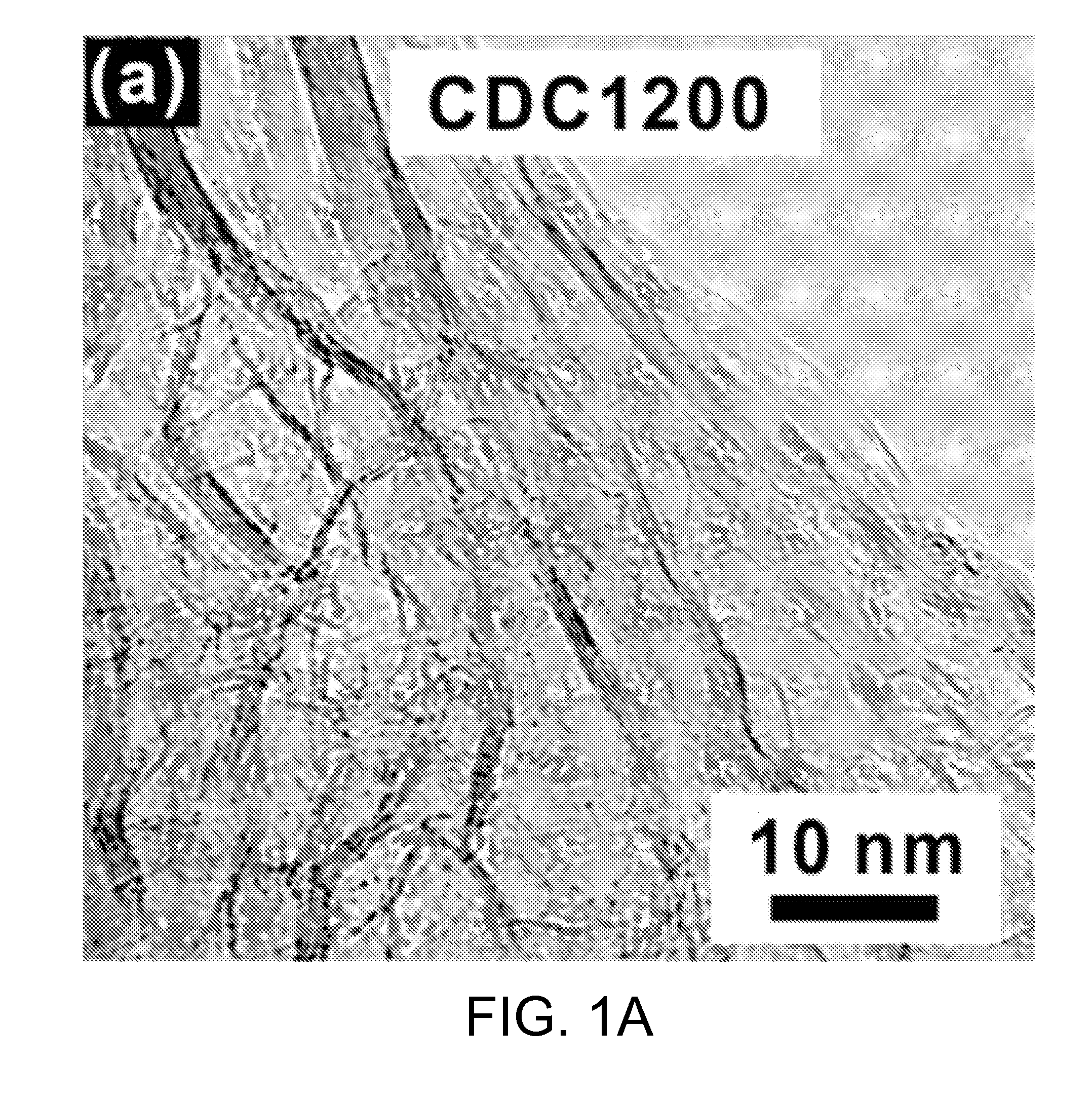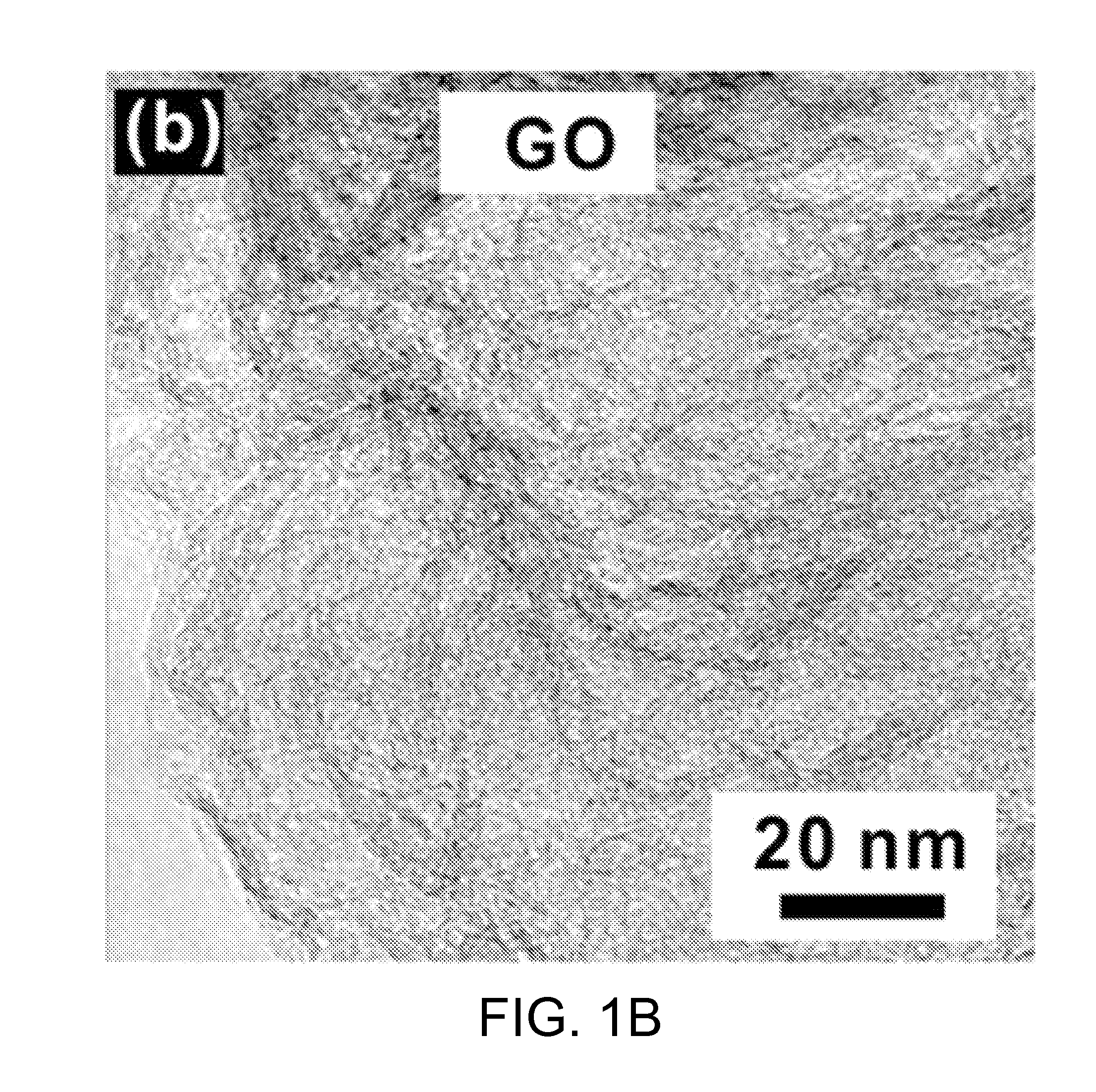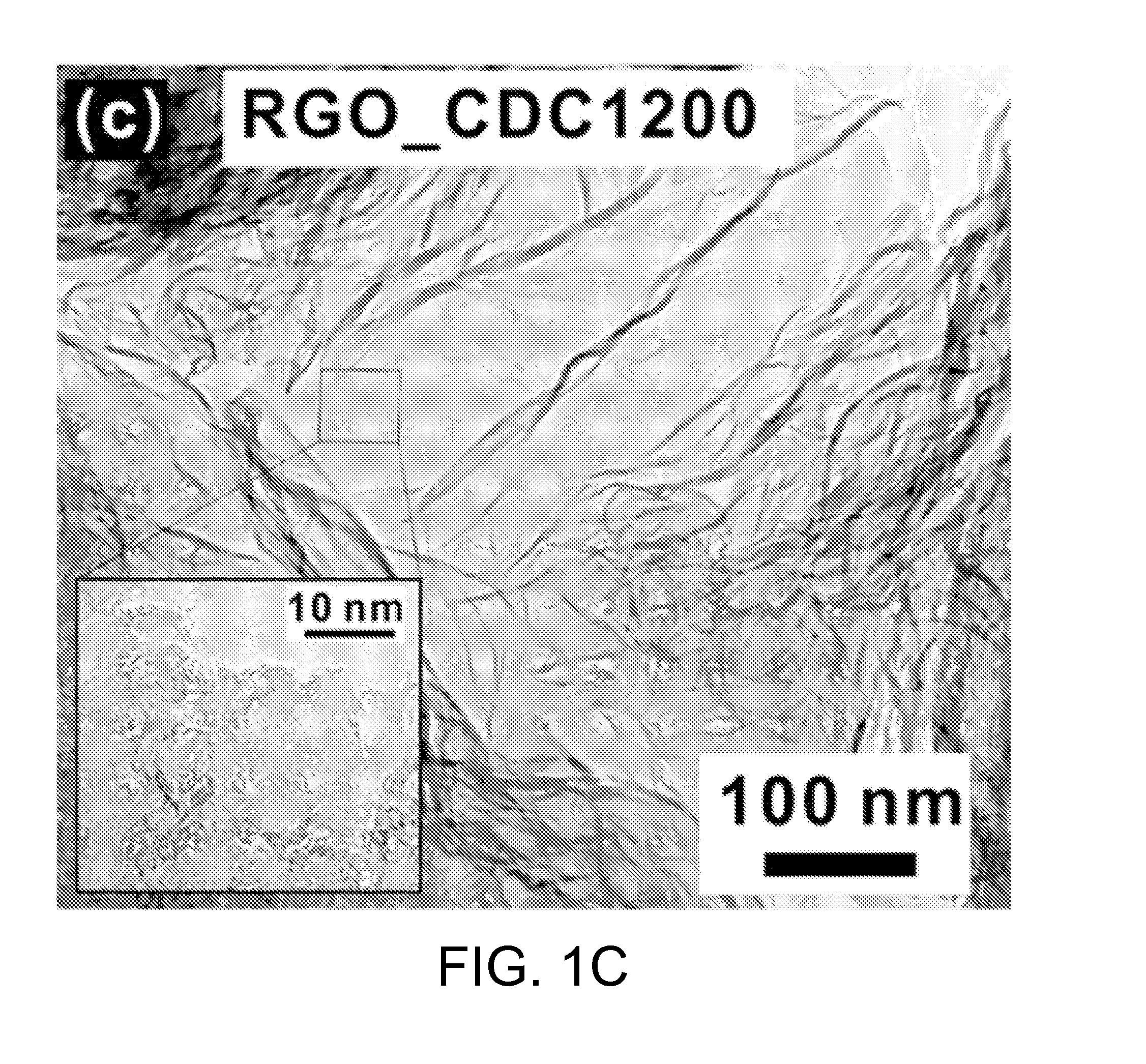Method of preparing graphene and anode mixture for lithium secondary battery including graphene prepared thereby
a lithium secondary battery and anode mixture technology, which is applied in the field of preparing graphene and an anode mixture for lithium secondary batteries including graphene, can solve the problems of low reversibility of lithium, poor stability, and material having such a shape that is problematic in terms of uniformity and lifetime, and achieves the effect of increasing ion mobility
- Summary
- Abstract
- Description
- Claims
- Application Information
AI Technical Summary
Benefits of technology
Problems solved by technology
Method used
Image
Examples
example 1
Preparation of Graphene from Porous CDC (Carbide-Derived Carbon)
[0040]TiC was thermochemically reacted with Cl2, thus preparing CDC1200 (Step 1).
[0041]In Step 1, TiC as a crystalline carbide compound and Cl2 as a halogen element-containing gas were thermochemically reacted at 1200° C. for about 3 hr, thus obtaining CDC. As such, in order to obtain high-purity CDC by removing Cl2 or titanium chloride (TiCl4) remaining on the surface of CDC, annealing the CDC with H2 gas for about 2 hr was performed, yielding porous CDC1200.
[0042]A process of preparing CDC1200 via thermochemical reaction of TiC and Cl2 is represented by Scheme 2 below.
TiC(s)+2Cl2(g)→TiCl4↑(g)+Cl↓(s)
[0043]Subsequently, CDC1200 was oxidized by a Hummers method, thus obtaining CDC oxide (Step 2).
[0044]In Step 2, CDC1200, 360 mL of H2SO4, and 40 mL of H3PO4 were placed in a single-neck round bottom flask and mixed for about 30 min, thus preparing a first mixed solution (in an amount of about 3 g), after which the flask co...
example 2
Preparation of Anode Mixture for Lithium Secondary Battery Including RGO_CDC1200
[0049]An anode mixture for a lithium secondary battery was prepared by mixing RGO_CDC1200 of Example 1, a super-P conductor and a polyvinylidene fluoride binder at a weight ratio of 8:1:1 at a high rate of about 2,000 rpm for 30 min using a homogenizer.
example 3
Manufacture of Anode for Lithium Secondary Battery Including RGO_CDC1200
[0050]An anode for a lithium secondary battery was manufactured in such a manner that the anode mixture of Example 2 was cast on a copper plate having a thickness of 10 μm using a doctor blade and dried at 80° C., and a polar plate having a size of 3×4 cm was formed from the copper plate, rolled and dried in a vacuum oven at 80° C. for 24 hr.
PUM
 Login to View More
Login to View More Abstract
Description
Claims
Application Information
 Login to View More
Login to View More - R&D
- Intellectual Property
- Life Sciences
- Materials
- Tech Scout
- Unparalleled Data Quality
- Higher Quality Content
- 60% Fewer Hallucinations
Browse by: Latest US Patents, China's latest patents, Technical Efficacy Thesaurus, Application Domain, Technology Topic, Popular Technical Reports.
© 2025 PatSnap. All rights reserved.Legal|Privacy policy|Modern Slavery Act Transparency Statement|Sitemap|About US| Contact US: help@patsnap.com



